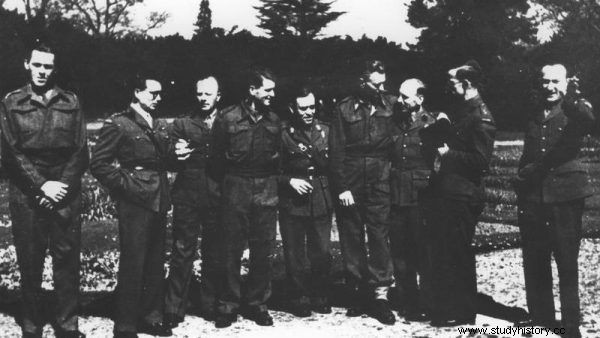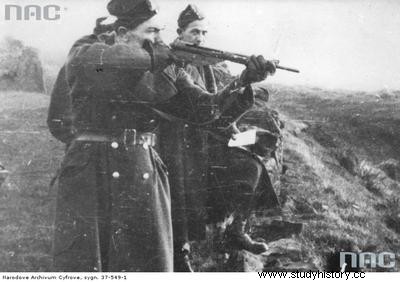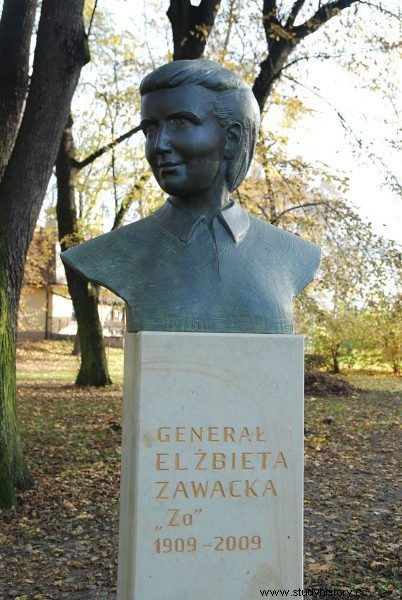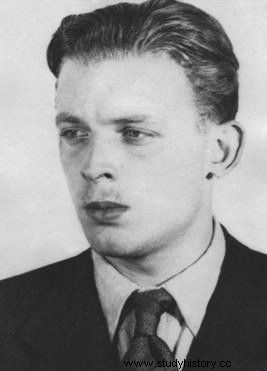They were steadfast because they crossed borders - not only territorial but also physical. Trained by the best, they themselves belonged to the military elite. Cichociemni. Commandos specializing in diversion, sabotage and intelligence. Under the cover of night, they landed in the occupied homeland to carry out seemingly impossible missions.
It is known that after the defeat of the September campaign, as early as November 1939, the commanders of the Polish Army began making plans to create a unit that could operate in an unconventional manner in the occupation battle. By plane. In fact, the idea was implemented shortly after, exactly in July 1940. It would not have been possible without the help of the Allies, namely Winston Churchill.
"Win freedom ... or die" - the beginnings of a secret organization
The British Prime Minister established the Special Operations Executive, a secret government organization whose task was, among other things, to establish contacts with all branches of the anti-Nazi underground in occupied Europe.
The Division VI of the Staff of the Commander-in-Chief, or the Independent National Division, later renamed the Special Division, was found relatively quickly. The recruitment, training and discharges of the Cichociemni for the Home Army became one of the most important tasks of the cell, whose first commander was Colonel Dipl. Józef Smoleński.

Cichociemni instructors
The most famous Cichociemni training center was established in June 1941 at Largo House near Leven in Scotland. In fact, there was not one course, as the programs were constantly modified - depending on the needs and individual predispositions of participants. The training was based on three foundations - physical and mental preparation, as well as the appropriate equipment of the volunteer. Because we need to know that the future commandos were recruited from among volunteers from the Polish army.
Trained for the most dangerous missions
All Cichociemni completed the training and briefing courses. As part of the first, the future commandos were primarily to develop adequate endurance and strength. Extremely intense training exercises consisted of cross-country runs in difficult terrain, training in hand-to-hand combat, knife fighting, Jujitsu, diversion, shooting. The second one was based on psychological preparation - a soldier operating in the underground had to acquire a completely new biography in order to find himself at the front like a chameleon. The course was jokingly called the College of Lies. But that's not all.

The process of training the Cichociemni was extremely complex and difficult
The training also included specialist courses - including for radiotelegraphists and radio mechanics, armored, anti-tank, language or so-called legalization courses, which were based on the specialist preparation of masters in the field of document forgery. It seems that the most important - from the point of view of military efficiency - was the training related to parachute jumping, which took place under the cover of night. As befits great commandos.
Jump into the unknown - Cichociemni missions
Combat training, even the most elaborate one, is theory after all. The practice, especially in the conditions of World War II, was like hell. The first drop, codenamed "Adolphus", took place on the night of February 15/16, 1941 and three jumpers participated in it - captain Stanisław Krzymowski ("Kostka"), Lieutenant Józef Zabielski ("Żbik") and the political courier Czesław Raczkowski ("Włodek"). The beginnings were not the easiest. Because after many hours of a dangerous flight, the route of which ran directly over Germany, the paratroopers hit a different destination than initially assumed - not Włoszczowa near Kielce, but in Cieszyn Silesia, and more precisely, in the vicinity of Skoczów.
The commandos relatively quickly hardened themselves in battle. When they managed to get safely to their homeland, they started fighting. Cichociemni were involved in training, investigating and building an intelligence network, participated in partisan and sabotage missions.

Only the best of the best could become Cichociemni
The commandos initially departed for the occupied homeland from the base near London, and from 1944 from Brindisi, a port city in southern Italy. Their importance was related not only to military value, but also to the financial aspect. Each of the Cichociemni received a considerable amount of money - from a few to even several thousand dollars fastened in a special belt - which was allocated to the functioning of the resistance movement. Out of several thousand candidates for active service, just over 300 were qualified.
The training was really exhausting, the selection was based on actually choosing the best. This group included an extraordinary woman, Elżbieta Zawacka.
One of the commandos was ... a woman
Elżbieta Zawacka, pseudonym "Zelma", "Sulica", "Zo" was a courier of the Home Army Headquarters and was the only one of the 15 candidates who underwent training and then served as Cichociemna. Before that happened, however, she graduated from mathematics at the University of Poznań, and after graduation, she conducted classes in defense training for women.

General Elżbieta Zawadzka
also belonged to the group of CichociemniShe proved her fortitude during the defense of Lviv in September 1939, and a few years later, in February 1943 to be precise, she set off as an emissary of the Commander-in-Chief of the Home Army to the headquarters in London. There, too, a new kind of war began.
The breakthrough for her was the action code-named "Neon", dated on the night of September 9-10, 1943.
This date is never forgotten. I was the only one who was silent. There would be many more people, but there was no room on the plane ...
- this is how Zawacka recalled her wartime experiences, who, like many Cichociemni, took part in the Warsaw Uprising. One of them was Aleksander Tarnawski
The last of the Cichociemni lives ... and is almost 100 years old
Chemical engineer, second lieutenant of armored weapons of the Polish Armed Forces and the Home Army, almost at the very beginning of the war, because already in October 1939, he got through Hungary to France, where he was assigned to the 1st Grenadier Division. He became Cichociemny in 1943. Dropped into occupied Poland on the night of April 16-17, 1944 in the "Riposte" operating season.

Aleksander Tarnawski
The living legend of the Cichociemni, born on January 8, 1921, is rather reluctant to recall his memories of World War II, noting that what matters to him is not what was, but what is and what will be. How perfect the preparation was - both mental and motor skills - is evidenced by the fact that Aleksander Tarnawski, currently retired major, in September 2014, at the age of 93, performed a tandem parachute jump with soldiers GROM units. Endurance, will to fight, muscle memory, unprecedented fortitude are the elements that made Cichociemni belong to the true elite of the Polish army.
Legends live forever
They were steadfast. Because they crossed borders - not only territorial, but also physical. Trained by the best, they themselves belonged to the military elite. In the pages of Polish history, we can find chapters not only about the heroic struggle for the homeland, but also about repressions by the Soviet and communist authorities in the People's Republic of Poland. Memory keeps soldiers immortal. It is worth knowing that the GROM Special Unit, by order of the Ministry of National Defense of April 4, 1995, received the name of the Military Unit Grom im. Cichociemnych Paratroopers of the Home Army and is committed to continue the tradition of commandos.
